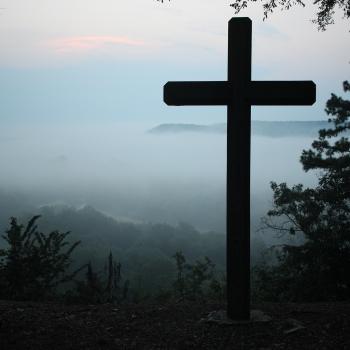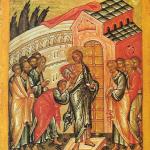As representatives of the LCWR meet with officials at the Vatican today, one sister talks to the Washington Post’s Michelle Boorstein about the controversy surrounding the Vatican’s intervention:
Anne Curtis’s Silver Spring office is decorated with warm afghans and photos of her late parents, and her phone ring is set to a chime like something you’d hear in a spa. The 59-year-old nun with the blond highlights, who speaks amiably with a heavy Rah-chester accent, sounds more like the helpful minister she’s been much of her life than someone in a standoff with her pope.
Except when she’s asked how American nuns went from being the good girls of the Catholic Church — the very epitome of faithful — to the subject of headlines around the world calling them rebels.
“Well,” Curtis said, her tone curt for the first time in more than an hour of talking, “We are the church, we are the church. We are the church as much as the bishops are, as much as our lay colleagues are, as much as people who raise their children in the tradition are. That’s the church. We are all the church.”
But what exactly does it mean to be Catholic?
It’s come down to that core question in this angry year for the nation’s Catholics, with political debates about health care and the size of government jumbled up with religious ones about whether people can be good, faithful Catholics and totally ignore their bishop when he tells them to vote or pray or believe a certain way. The two sides represent seemingly incompatible visions of Catholicism, the country’s largest denomination, with one camp prizing openness and collaboration and the other championing unity of belief.
Standing in for those visions Tuesday in a Vatican meeting room will be two prominent American nuns and two prominent American bishops charged with “reforming” the Leadership Conference of Women Religious, which represents about 80 percent of the country’s roughly 56,000 nuns.
Media across the globe are riveted on the meeting, as are sisters who in recent weeks have been streaming to a new site, sisternews.net, launched this spring amid a crush of news about them. The women aren’t expected to say much publicly until after they meet with the full conference in August. A Vatican spokesman said Monday that he hopes the Tuesday discussion will produce a “reciprocal understanding.”
The Vatican’s doctrine-enforcing arm in April released a report laying out the need to review, guide, and, “where necessary,” approve the work of the LCWR, which has hosted speakers who advocate against official church teachings on subjects including women’s ordination and the possibility of nondenominationalism, or “moving beyond the church.” The report also called the conference “notably silent” on abortion and same-sex marriage.
The conference’s 1,500 members represent orders including Curtis’s — the Sisters of Mercy of the Americas, which has 4,300 members. Conference leaders pushed back hard June 1, saying the report caused “scandal,” and asking for a meeting in Rome.
All sides recognize how sensitive and deep the disputes are. Catholics critical of the sisters, several experts on American Catholicism and many nuns and their leaders declined to speak publicly for this article.















